Image and Text
The inclusion of image and text is a relatively
simple operation in Dreamweaver. For text, you simply type or paste
text into the document window,
the large window corresponding to the web page.
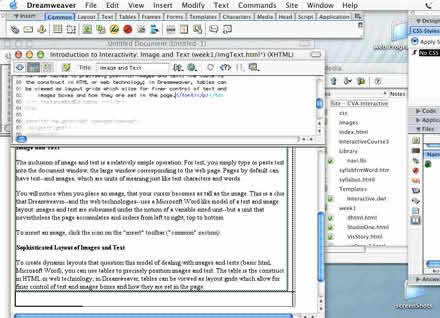
Pages by default can have text--and
images, which are units of meaning just like text characters and
words.
You will notice when
you insert an image, that your cursor becomes as tall as the
image. This is a clue that Dreamweaver--and web
technologies--use a Microsoft-Word-like model of a text and image layout:
images and text are subsumed under the concept of a variable sized
unit that nevertheless is accumulated on the page
and is
ordered from left to right, top to bottom.
To insert an image, click the  icon
on the "insert" toolbar ("common" section). icon
on the "insert" toolbar ("common" section).
Sophisticated Layout of Images and Text
To create dynamic layouts that question this model
of dealing with images and texts (basic html, Microsoft Word), you
can use tables to precisely position images and text. The table is
the construct in HTML or web technology; in Dreamweaver, tables can
be viewed as layout grids which allow for finer control of text and
images boxes and how they are set in the page.
Here is a screen image of a table in normal mode:
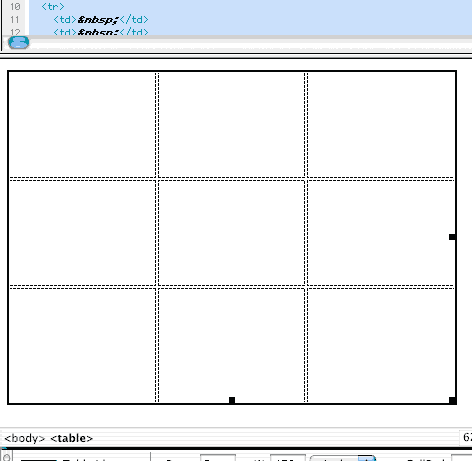
And here is a table in layout mode, with a cell
being drawn after pressing the Layout Cell button.

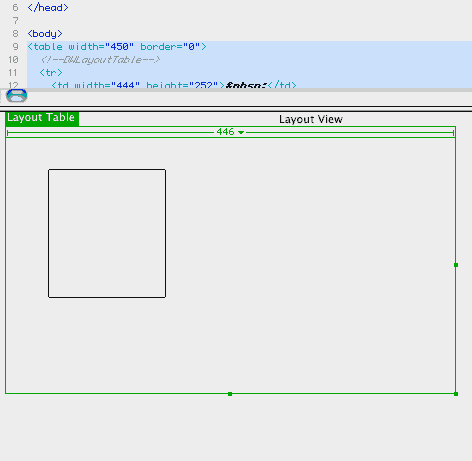
...and the new cell which functions as a text or
image box, like a page layout program such as Quark Xpress or In
Design:
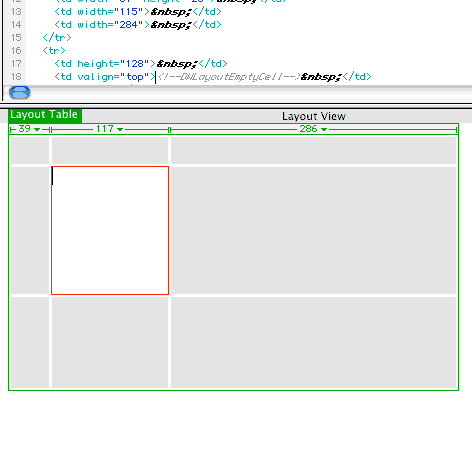
Now an image or text may be placed in this strategically
positioned container for image/text. Note that the layout table
sizes to fit the image, rather than masks the image like Quark.
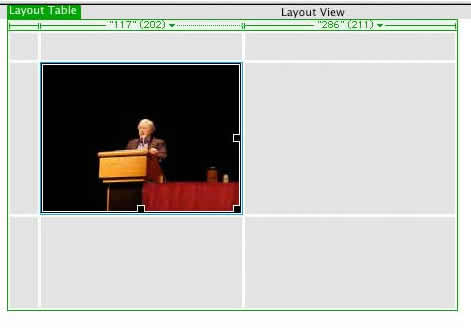
|

